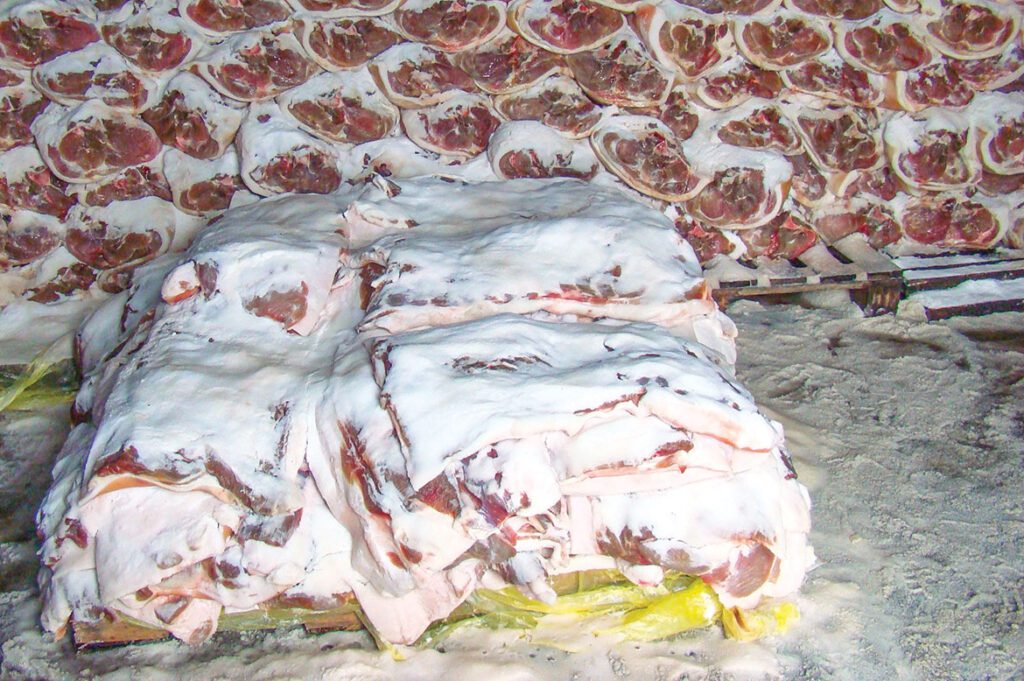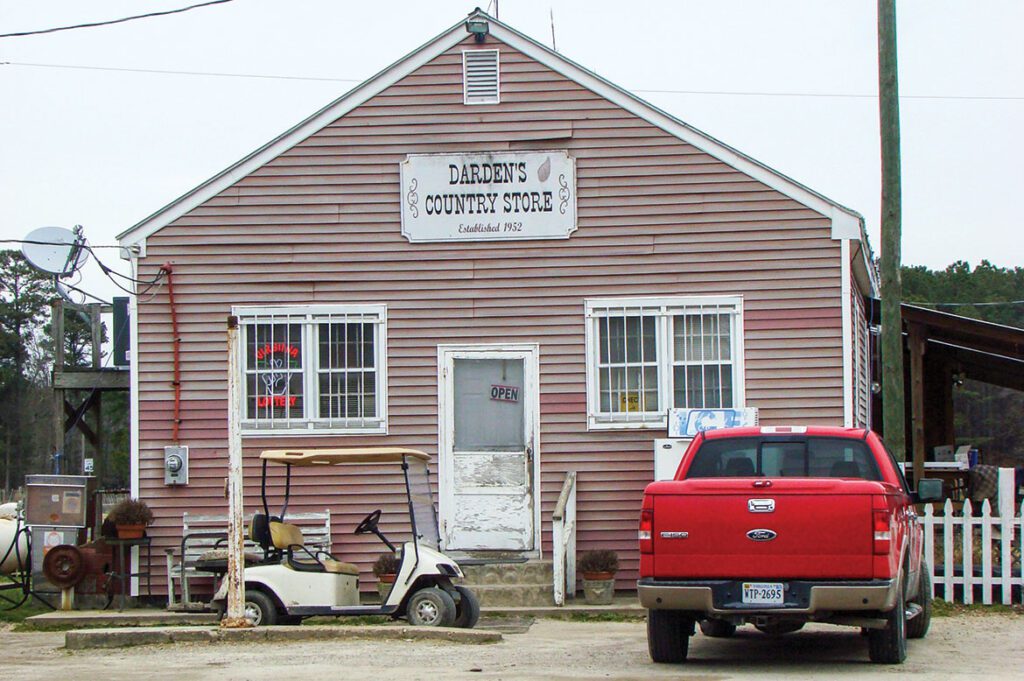By Reed Hellman
It’s easy to get comfortable in a town that has distilled the best parts of traditional Virginia hospitality and combined them with engaging attractions, well-managed events and an understanding of what makes a successful vacation. Smithfield’s range of quality accommodations and unique dining opportunities caps the experience.
Visitors find that they slow down and adopt a leisurely gait as they prowl Main Street’s shops, stare up at Church Street’s mansions or spot waterfowl along Windsor Castle Park’s walking trail. Numerous town festivals celebrate special occasions and feature regional cuisine, including the world-famous Smithfield ham.
In 1779, Captain Mallory Todd shipped a quantity of hams, salt cured in his smokehouse using Native American methods, to Elliston and John Perot on St. Eustatius in the Caribbean. In return, Capt. Todd received, among other items, a 2-lb cannon and a hat. This transaction marked the first known commercial sale of a Smithfield ham. Connoisseurs now recognize the Smithfield country ham as one of the world’s great delicacies, on a par with Spain’s Jamón serrano and Italy’s Parmas and Prosciuttos. A genuine Smithfield has a distinctive dark pink color and pungent flavor—robust, salty and rich with hardwood smoke.
Originally written into the laws of the Virginia Commonwealth, a genuine Smithfield ham required a Virginia or North Carolina-raised razorback hog, peanut-fed and traditionally cured within Smithfield city limits. Peanuts made the hams oily and a genuine Smithfield ham can remain edible indefinitely. Following Capt. Todd’s lead, Smithfield ham producers packed thousands of hams into wooden barrels and shipped them to the Caribbean from the town’s port on the Pagan River. As curing operations grew in size, the town had to move its boundaries a time or two to encompass the new facilities.

Today’s Smithfield Foods, Inc., operates the largest ham company in the world and is the No. 1 U.S. producer of packaged pork products. Smithfield Foods has maintained a close, positive relationship with the city and operates the Smithfield Inn, opened in 1752. Spending a night at the inn is an essential Smithfield experience. Begin with drinks at the bar, then dine on traditional local fare.

The Smithfield Inn’s ham biscuits have been made for more than 50 years by Mozell Brown. Her ham biscuits are one of humankind’s perfect foods: a thin slice of country ham baked into a light yeast roll with a papery crust that collapses in the mouth. It’s two or three bites of savory meat and slightly sweet biscuit, a pleasantly greasy feel on the lips and a smoky flavor on the palate.
Smithfield is a walking town, the right size and scale to appreciate on foot. The Smithfield & Isle of Wight Visitor Center on Main Street produces a walking tour map that covers much of the nine square block registered historic district. Nearly three dozen locally owned shops line Main Street. More than 60 historic or significant buildings—many of them Victorian “painted ladies”—cluster along Main, Grace and South Church streets. Smithfield Station’s Boardwalk Shops and Windsor Castle Park’s nature trails add other dimensions for pedestrian touring.

At the Visitor Center, the Arts Center @319 shares the storefront, hosting exhibit space for local artists, resident artist studios and a shop featuring local art. Smithfield is also home to the largest collection of George Lundeen’s life-size bronze statues, scattered throughout the town.
Standing at the town’s apex, where Main and Church streets intersect, the Isle of Wight County Museum spreads its displays throughout the marble and tiled former Bank of Smithfield building. Under a domed Tiffany-style skylight, the well-curated collections chronicle the region’s history, from prehistoric fossils to the present. Visitors can even view the world’s oldest edible cured ham, nearly 115 years old, and once the “pet” of P.D. Gwaltney, a ham industry pioneer.

The museum building tops Wharf Hill; beyond, the steep slope leads down to the Pagan Riverfront. Along the descent, the Wharf Hill Brewing Company stands as an homage to Smithfield’s past. A formerly low-brow commercial building was remodeled using locally salvaged materials, creating a decidedly contemporary microbrewery, bistro and live music venue with a very traditional feel. Up the hill, the Smithfield Winery also uses repurposed materials to a far different effect. Owner and winemaker Natasha Huff presents her “bubbly” sparkling wines in a tasting room that deftly blends Steampunk with traditional.
Those traditions can go as far back as the 1620s. Since 1623, Fort Boykin has commanded a lookout over the James River. St. Luke’s Church, a National Historic landmark built in the 1630s, is America’s oldest existing church of English foundation. The Old Courthouse on Main Street, built in 1750, carries the golden eagle masthead removed from a Union gunboat during the Civil War’s Battleof Smithfield.
Country hams have provided an integral pillar supporting those traditions for almost 240 years.

Along with Smithfield Foods, several smaller producers still salt cure, hang, and smoke hams. The Darden Family cures about 1,000 hams each year in the smokehouse on their 600-acre farm, and sells the hams along with homemade sausage, pimento cheese, chicken salad and pot pies in Darden’s Country Store. For more than 50 years, in a nondescript shed on a back-country road, the Dardens have made some of the world’s finest hams. Aged for a full year and sliced so thin as to be translucent, the meat is dark and oily, but almost flaky. The flavor is full, lasting, and distinctive. The Taste of Smithfield Shop on Main Street, owned by Smithfield Foods, also carries a full line of Genuine Smithfield country hams along with local peanuts, candies and novelty items. The shop offers a full menu and beer and wine. Dining on fresh seafood and regional delicacies at Smithfield Station and freshly baked breads and desserts from the Smithfield Gourmet Bakery have also become local traditions.
